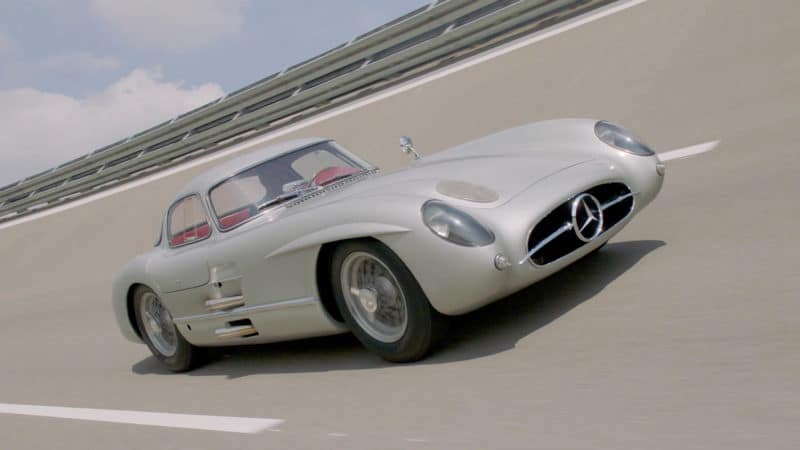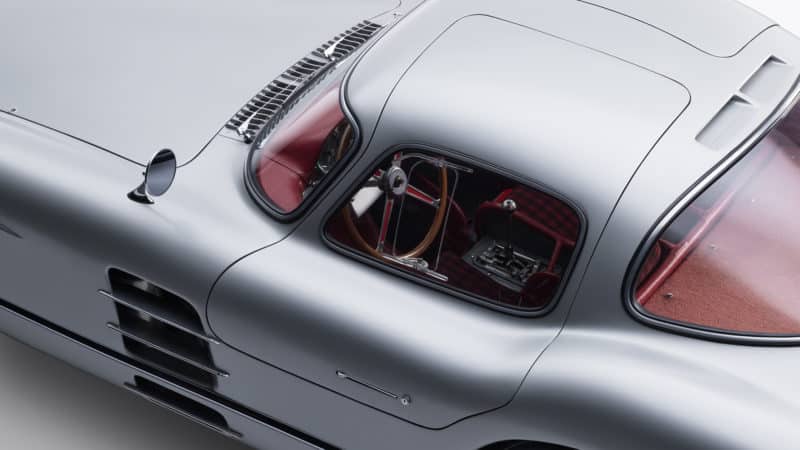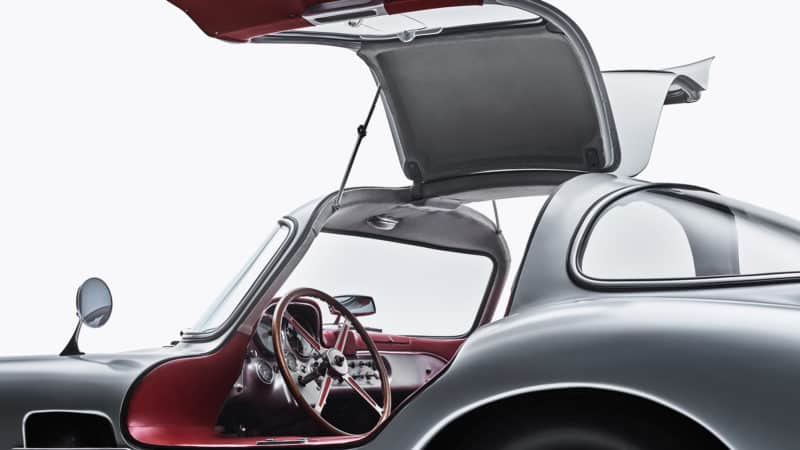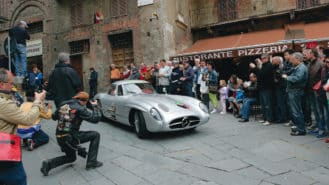But with two chassis already in development, Uhlenhaut continued work on the coupe, which was now repurposed as a road car, the likes of which had never been seen before.
The design was borrowed from the standard 300 SL (as well as Mercedes’ racing streamliners), but underneath was the gearbox and suspension derived from Juan Manuel Fangio’s 1954 and ’55 world championship-winning Formula 1 cars.
Elektron magnesium alloy helped keep weight down to 998kg. Combined with that engine, performance was explosive: recorded top speed of 176.47mph made it comfortably the fastest production car of its era.
More than its speed, it’s the sound — and its volume — that define the Coupe. “Cough — ker-BLAAAAAMMMM!” wrote Doug Nye after driving the car in the 2010 Mille Miglia recreation. “Incredible, cacophonous, ear-splitting noise is what the 300 SLR is all about. Conventional language just doesn’t express it.”
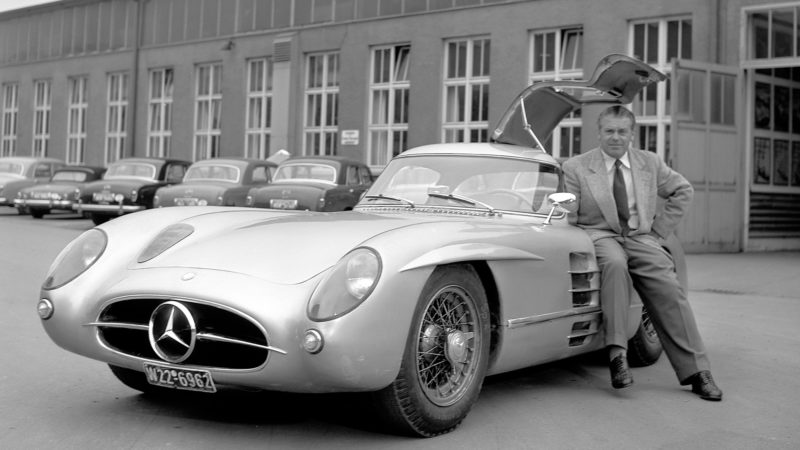
Rudolf Uhlenhaut with his prototype creation
Mercedes
The first Coupe, upholstered in blue, was produced after Le Mans, and was used as a company car by Uhlenhaut, whose hearing loss in later years has been attributed to his regular 140mph+ commutes on the autobahns.
The second, chassis 00008/55, was built by June 1956 with a red interior. With no plans to put the car into production, the car has largely been used for demonstration runs and was part of Mercedes’ non-public collection.
